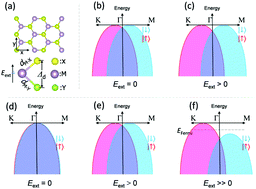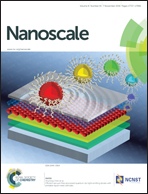Nonlinear Rashba spin splitting in transition metal dichalcogenide monolayers†
Abstract
Single-layer transition-metal dichalcogenides (TMDs) such as MoS2 and MoSe2 exhibit unique electronic band structures ideal for hosting many exotic spin-orbital orderings. It has been widely accepted that Rashba spin splitting (RSS) is linearly proportional to the external field in heterostructure interfaces or to the potential gradient in polar materials. Surprisingly, an extraordinary nonlinear dependence of RSS is found in semiconducting TMD monolayers under a gate field. In contrast to small and constant RSS in polar materials, the potential gradient in non-polar TMDs gradually increases with the gate bias, resulting in nonlinear RSS with a Rashba coefficient an order-of-magnitude larger than the linear one. Most strikingly, under a large gate field MoSe2 demonstrates the largest anisotropic spin splitting among all known semiconductors to our knowledge. Based on the k·p model via symmetry analysis, we identify that the third-order contributions are responsible for the large nonlinear Rashba splitting. The gate tunable spin splitting found in semiconducting pristine TMD monolayers promises future spintronics applications in that spin polarized electrons can be generated by external gating in an experimentally accessible way.


 Please wait while we load your content...
Please wait while we load your content...